Contents
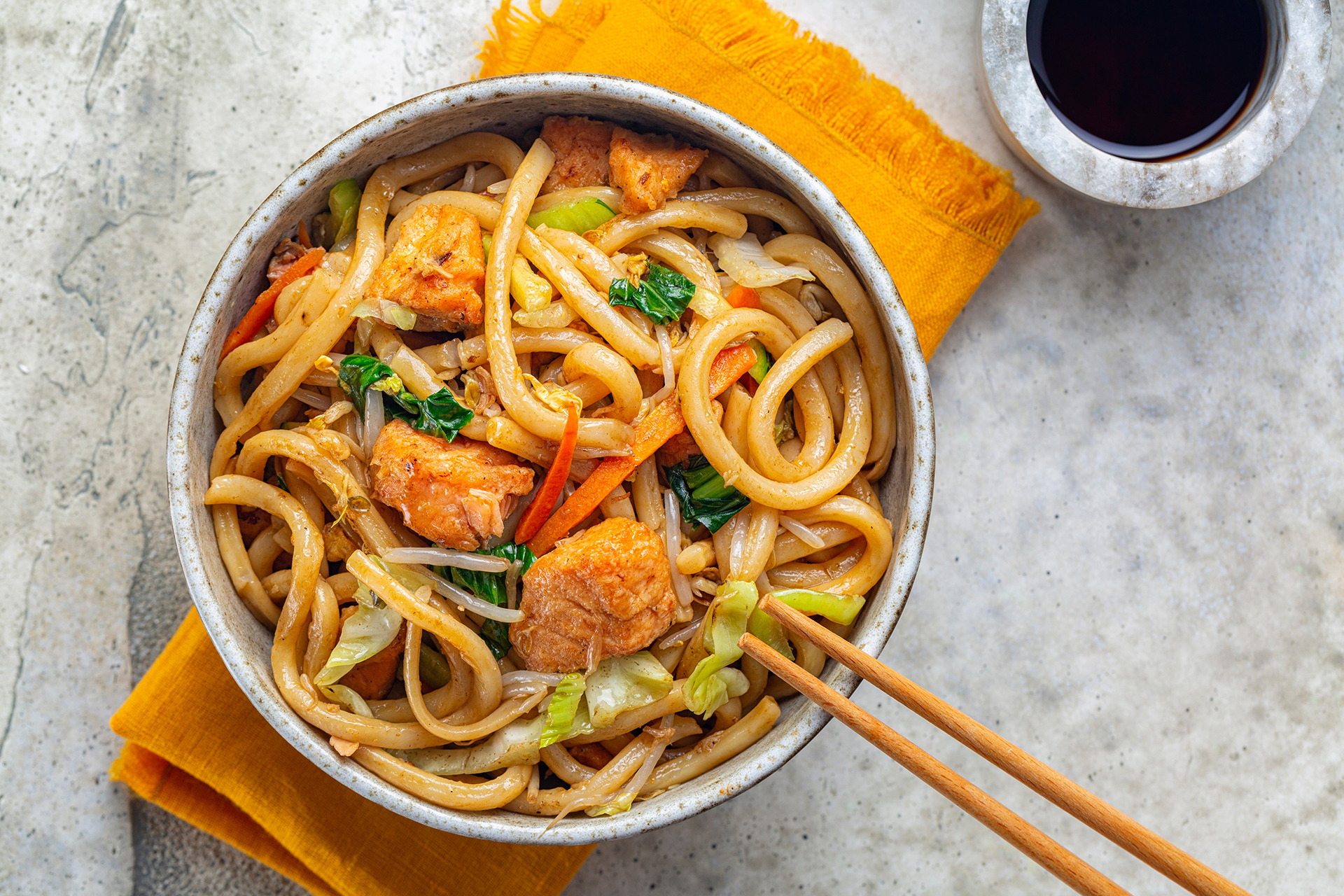
My exploration of Japanese cuisine has taken me down many delicious paths. Still, recently, I fell in love with a dish called yaki udon (yah-ki oo-don). It's a stir-fried noodle dish featuring thick, chewy udon noodles stir-fried with savory meats and vegetables. Unlike ramen, served in a flavorful broth, yaki udon noodles are drier but pack a punch for flavor.
Yaki udon noodles are a fantastic weeknight meal because they're surprisingly quick and easy to make at home. Plus, they're incredibly versatile! You can personalize them with your favorite protein and veggies. While a traditional yaki udon noodles recipe might call for specific ingredients, feel free to experiment and find what works. My favorite is chicken yaki udon.
The best part? According to the USDA, yaki udon noodles themselves are around 269 kcals. So, ditch the takeout menu and get ready to experience the delightful world of yaki udon noodles!
What You Need to Know About Yaki Udon Noodles
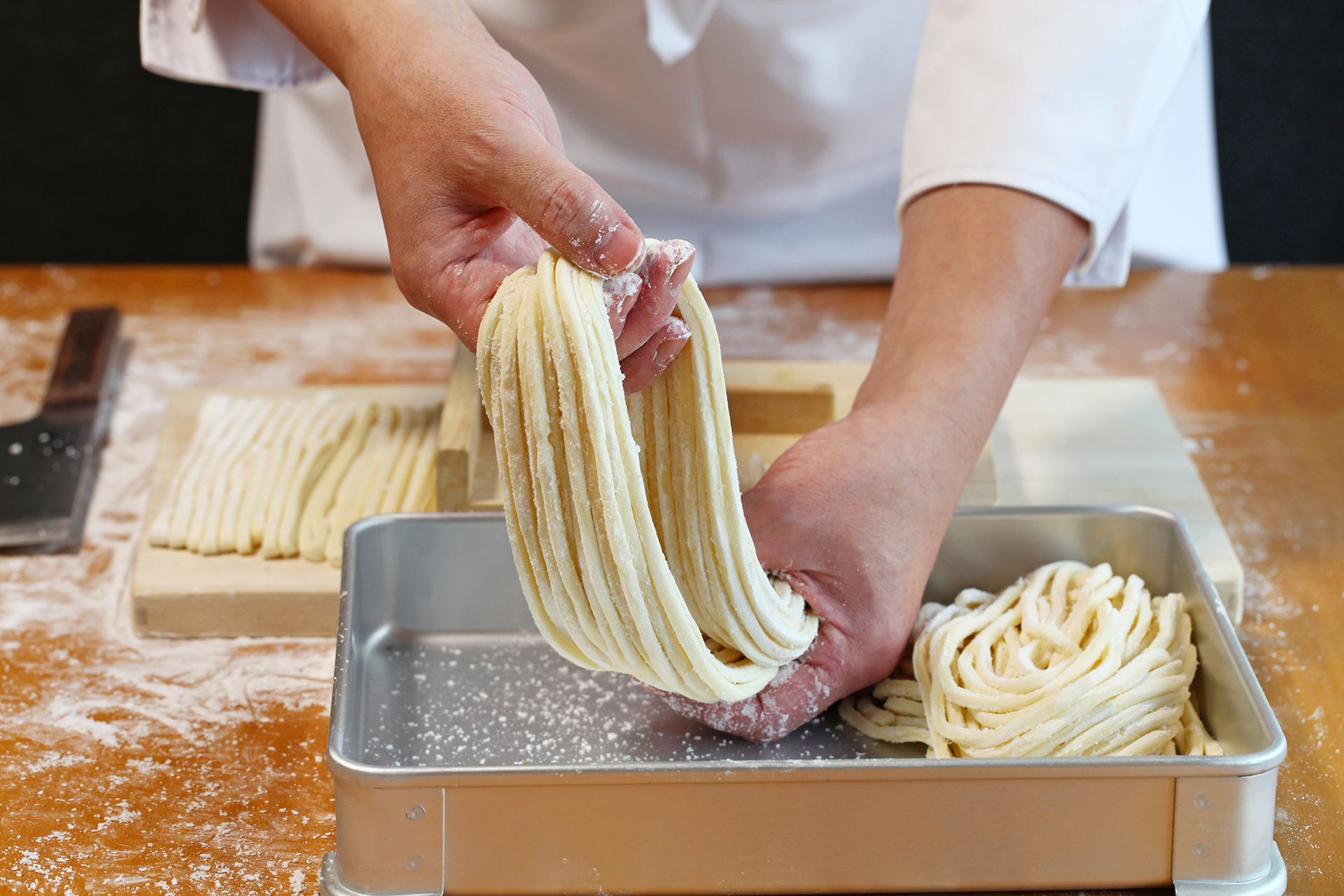
Recently, I've been diving deep into the world of yaki udon noodles. These stir-fried noodles have quickly become one of my favorites. Starting with the right noodles is essential to getting yaki udon right. There are three main types: fresh, dried, and pre-cooked frozen udon noodles, each bringing its own unique twist to the dish.
Understanding the types of udon noodles: fresh, dried, and pre-cooked
My journey through the kinds of yaki udon noodles was quite enlightening. Balancing the soft udon noodles and the crisp veggies is crucial when stir-frying. Each type of noodle absorbs the savory sauce differently.
Fresh udon noodles are thick and chewy, perfect for those who love a more authentic feel. Dried udon noodles need extra attention; they must be boiled just right so they don't get too mushy in the stir fry. Pre-cooked udon noodles are super convenient, and they keep their chewy texture really good when mixed into the stir fry.
Essential ingredients for a classic Yaki Udon
While yaki udon noodles are versatile, a classic version requires a few key ingredients.
- Protein: Traditionally, yaki udon noodles are made with thinly sliced beef or ground pork. However, I sometimes experiment with chicken, tofu, or shrimp for a delicious twist.
- Vegetables: Shredded cabbage, bok choy, bell peppers, and shiitake mushrooms are popular vegetables for yaki udon noodles.
- Sauce: The savory sauce brings yaki udon noodles together. A typical yaki udon sauce is made with a base of soy sauce, mirin (a sweet rice wine), and sake (a rice wine). You can also use a store-bought tonkatsu sauce for a shortcut. This recipe I found on The New York Times Cooking stated that though dark soy sauce and oyster sauce are not traditional, they can add a thicker, sweeter taste.
In addition to these core ingredients, you'll also need some basic pantry staples, like sesame oil, for cooking and toppings, like chopped scallions and sesame seeds, for a finishing touch. With this essential ingredient list, you're well on your way to creating authentic and delicious yaki udon noodles at home!
Preparing Your Ingredients
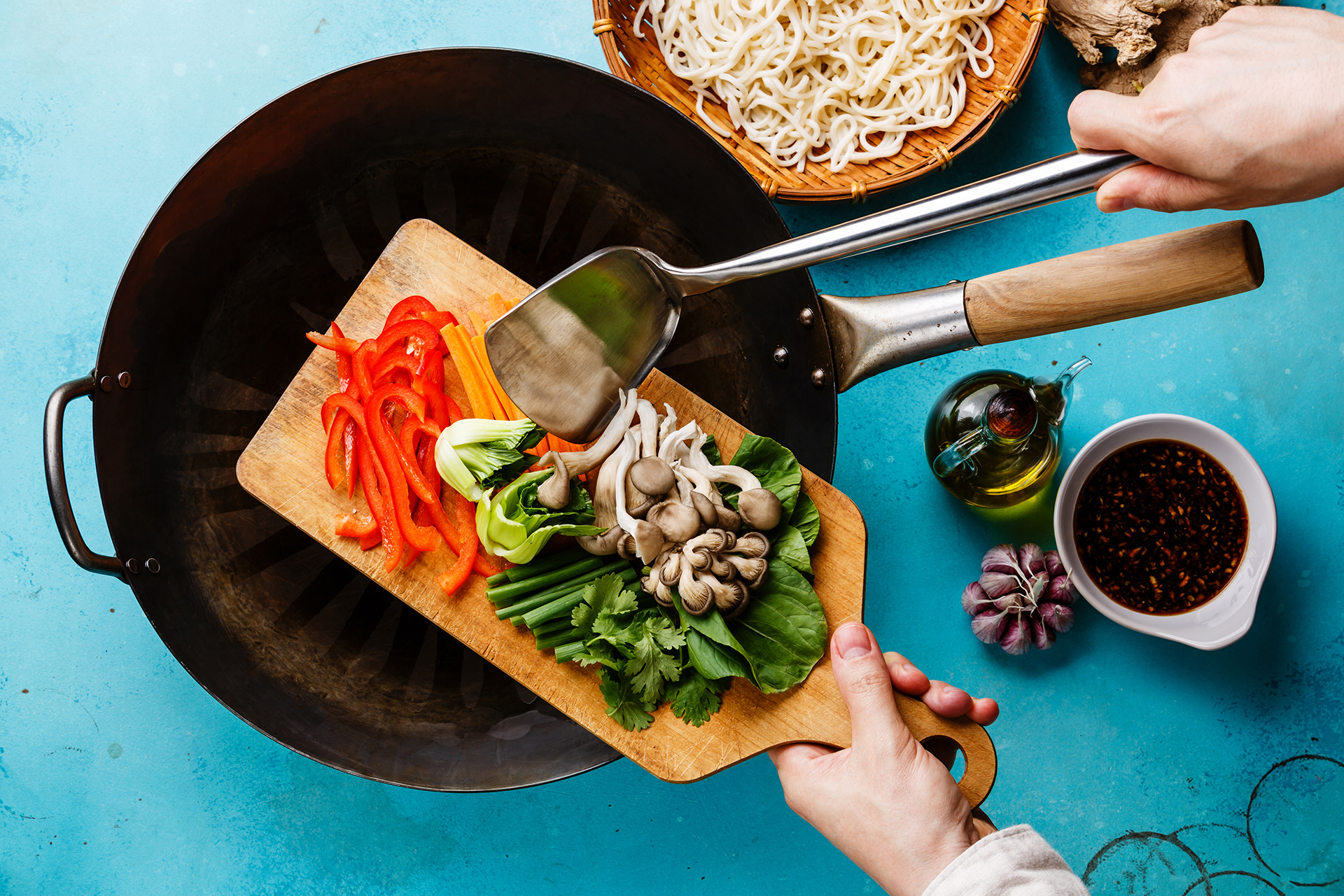
As I continue my adventure with yaki udon noodles, I've learned that correctly prepping the ingredients is just as crucial as cooking. Whether choosing the best yaki udon noodles or fresh produce, each step is essential for creating delicious stir-fried udon noodles.
Tips on selecting the best ingredients for flavor and authenticity
Selecting the right ingredients is vital to capturing the authentic flavors of yaki udon. When shopping for yaki udon noodles, I look for thick noodles that promise a chewy texture, essential for an excellent yaki udon. I prefer pre-cooked udon noodles for their convenience and consistent quality. Still, fresh udon noodles can also be a great choice if you're after that perfect soft yet firm bite.
High-quality soy sauce and rice wine are non-negotiables for the stir fry, as they form the base of the savory sauce that characterizes authentic yaki udon noodles. I also add shiitake mushrooms and green onions, adding depth and freshness to the dish.
I can adjust the ingredients to my taste by making sauce from scratch. I add a little more brown sugar if I want a sweeter sauce and a drizzle of oyster sauce if I crave a richer flavor. For shortcuts, I use store-bought yaki udon sauce or teriyaki sauce. Still, I taste it first and adjust seasonings as needed.
Prepping vegetables and proteins for quick cooking
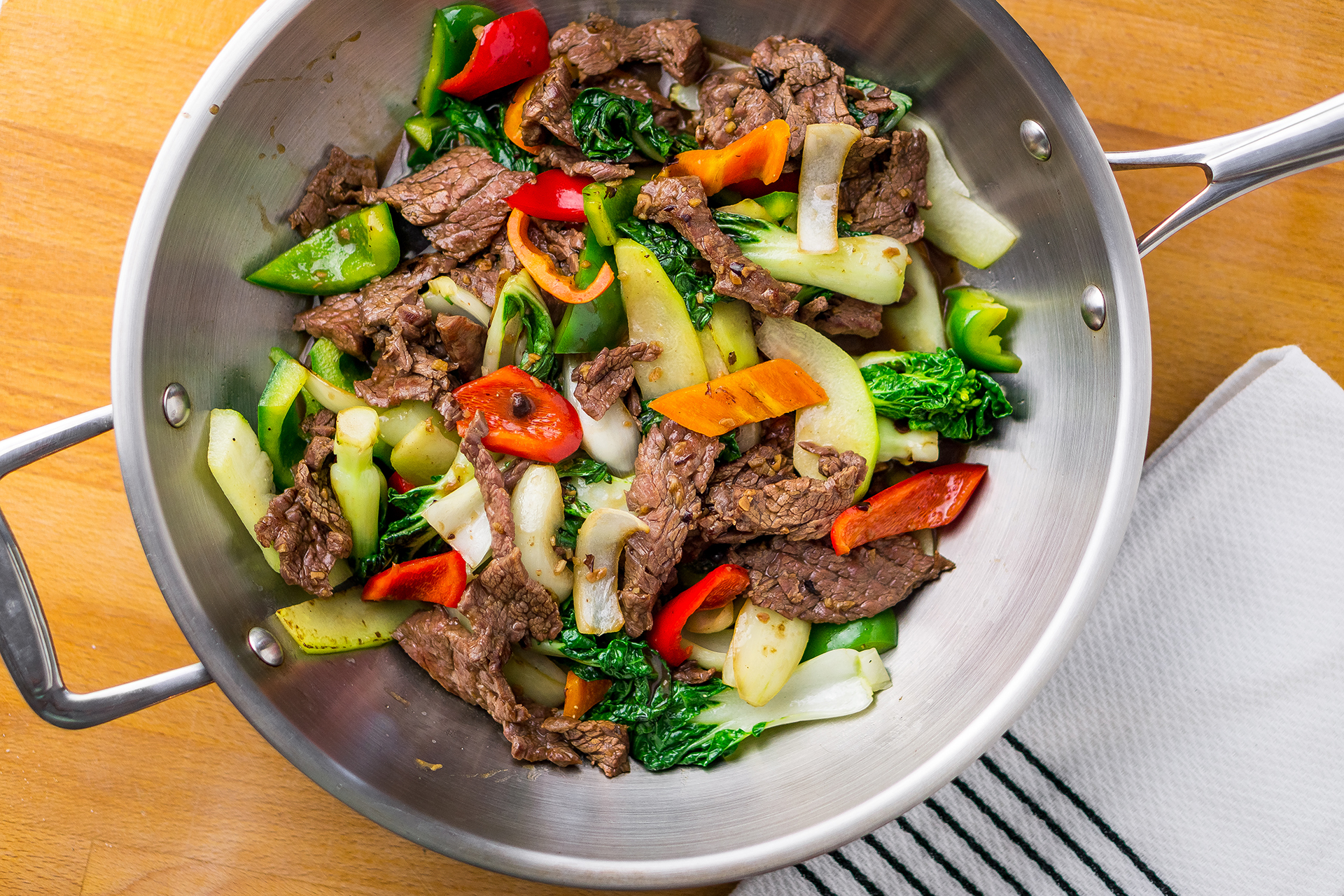
Preparing your veggies and proteins for the stir fry ensures everything cooks evenly. It absorbs the flavors of the yaki udon sauce. Here's how I prep my protein and vegetables for the best stir-fried udon noodles:
- Protein: When using fresh meat, I choose thinly sliced cuts that cook quickly in the high heat of my stir fry. For ground meat, I pre-brown it in a different pan and drain off any excess fat before adding it to the stir fry.
- Vegetables: I wash and chop my vegetables into bite-sized pieces. This will ensure that cooking is even throughout the dish. I aim for similar sizes so everything cooks at the same rate. For vegetables that cook quickly, like snow peas, I wait until later in the stir-frying process to add them. A great vegetable to use for an authentic flavor is bok choy.
I also like measuring everything and placing it in small bowls beside the stove. I carefully selected and prepared my ingredients and set the stage for a successful stir-fry dish. This methodical prep enhances the flavors and brings me closer to mastering the art of Japanese stir-fried noodles, making each yaki udon recipe I try even more enjoyable.
Cooking Udon Noodles
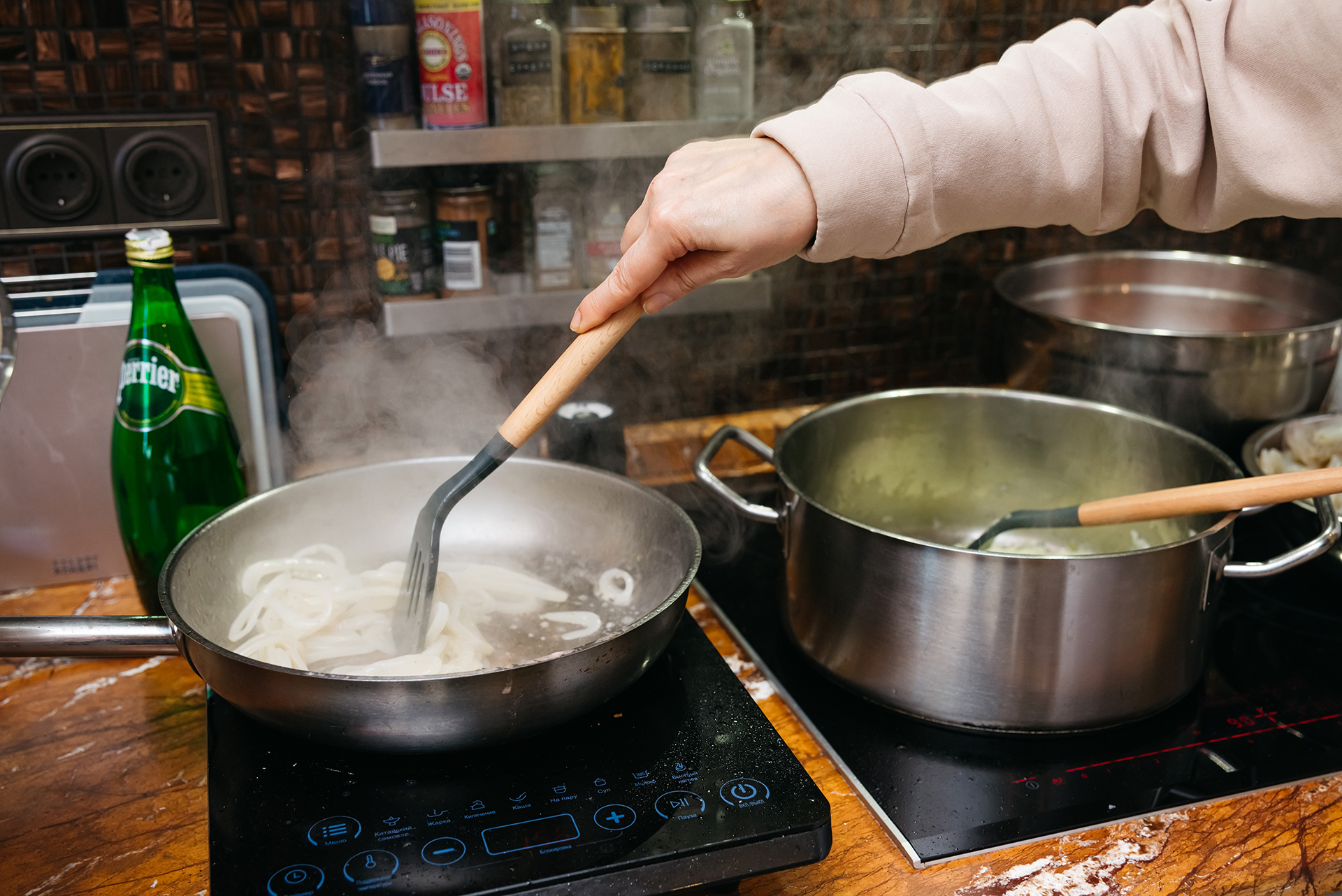
Now that the ingredients are prepped, it's time to cook the star of the show: the yaki udon noodles. The cooking method will vary based on the noodles used. Perfecting my yaki udon noodles means understanding the nuances of cooking in various forms. Whether they come from a package, are dried, or are ready to eat, each type requires specific techniques to ensure they are perfectly prepared for my yaki udon recipes.
How to properly cook udon noodles from a package
Cooking packaged noodles for my yaki udon stir-fried dish requires careful attention to prevent them from becoming too soft or mushy. I begin by boiling water in a large pot. Once the water comes to a rolling boil, I add the udon noodles, gently separating them with chopsticks.
It’s crucial not to overcook them; I follow the package instructions for cooking time. Fresh packages of noodles usually only take 2 to 3 minutes to cook. Once done, I rinse the cooked noodles under cold water to prevent them from sticking together.
Techniques for cooking dried Japanese udon noodles
Dry udon noodles require more patience and precision. I bring a large pot of water to a boil, add the dried udon noodles, and stir every so often to prevent them from sticking together. Cooking times can change depending on the type of noodles, but I found this guide from Epicurious taught me to cook dried noodles for around 10 to 12 minutes.
Once cooked, I rinse the noodles under cold water to halt the cooking process. This step is crucial for maintaining the firm texture in an excellent stir-fried dish, allowing the noodles to stand up to the high heat without turning mushy.
Best practices for using ready-to-eat udon noodles
Ready-to-eat udon noodles are the quickest option for a busy night, making them a frequent choice in my kitchen for yaki udon. Since these noodles are pre-cooked, they only need to be warmed up, which I do by briefly submerging them in boiling water for about one minute. This heats them and helps remove any preservatives or excess oil.
After draining, I immediately transfer them to the frying pan, where they join the stir-fried ensemble with chicken or thinly sliced beef, green onions, shiitake mushrooms, and a robust yaki udon sauce that ties all the flavors together.
Whatever type of udon noodles you choose, the key is to cook them until they are al dente. This means they should be tender but still have a slight bite.
The Art of Stir-Frying Yaki Udon
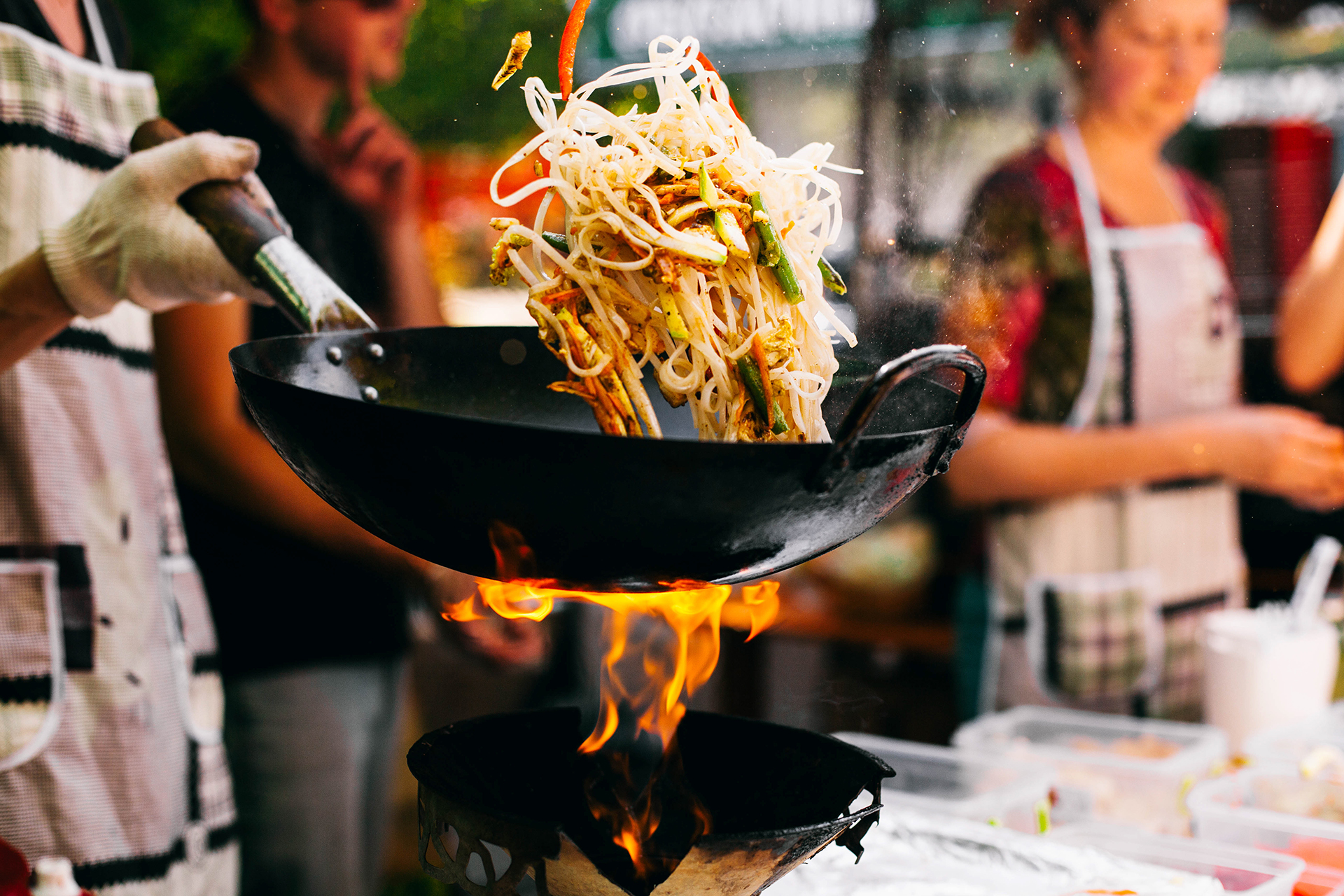
Mastering the art of stir-frying yaki udon noodles has been a central part of my culinary journey into Japanese cooking. It's not just about tossing ingredients into a pan; it's a delicate balance of timing, heat, and technique that turns simple ingredients into a symphony of flavors. Here's how I've learned to perfect this vibrant dish.
Step-by-step guide to stir-frying your ingredients
When I begin my yaki udon stir-fry, everything must be ready. This dish waits for no one, and the ingredients must quickly hit the pan to avoid overcooking. Here's what I've learned about stir-frying these noodle recipes:
- Heat Up The Wok or Pan: Heat the wok or large pan to medium-high heat for about 30 seconds. A hot pan is crucial in achieving that perfect caramelized and slightly crispy texture in those yaki udon noodles. Add a drizzle of sesame oil to coat the pan.
- Cook the Protein: Next, add the desired protein, like ground beef or ground pork, and cook it until browned and almost cooked through.
- Add the Vegetables: Once the protein is cooked, push it to the side of the pan and add those vegetables. I start with the harder vegetables that may be longer to cook, like bell peppers or carrots, and then add softer vegetables, like bok choy or snow peas, later in the process.
- Incorporate the Sauce: Add your yaki udon sauce once the vegetables are tender-crisp. Give it a swift stir to evenly coat everything.
Incorporating Yaki Udon Noodles into your stir-fry
Once the proteins and tougher veggies are nearly cooked, it’s time for the yaki udon noodles. If I use frozen, pre-cooked udon noodles, I ensure they've been adequately thawed and separated. This is key to preventing clumps that won’t cook evenly. I add the noodles to the pan, followed swiftly by my pre-mixed yaki udon sauce.
With a pair of tongs or a large spoon, I toss the noodles vigorously with the other ingredients, ensuring the sauce coats everything evenly. The noodles must be fried for a few minutes, becoming slightly crispy and imbued with the savory sauce. This is where the magic happens, and all the flavors start to come together.
The role of high heat and quick movements in achieving the perfect dish
High heat is essential in stir-frying yaki udon. It cooks the ingredients quickly and helps develop a slight char on the noodles, providing a delightful texture contrast. The high heat causes the sugars in the sauce to caramelize soon, locking in flavors and creating that signature stir-fry aroma that fills the kitchen.
Quick movements are just as important. By constantly moving the ingredients around the pan, I ensure nothing sticks or burns, allowing each piece to pick up heat and flavor evenly. The swift tossing and stirring give stir-fried dishes like yaki udon noodles their distinct character. Each ingredient is just cooked, vibrant, and bursting with flavor.
Flavoring Your Yaki Udon
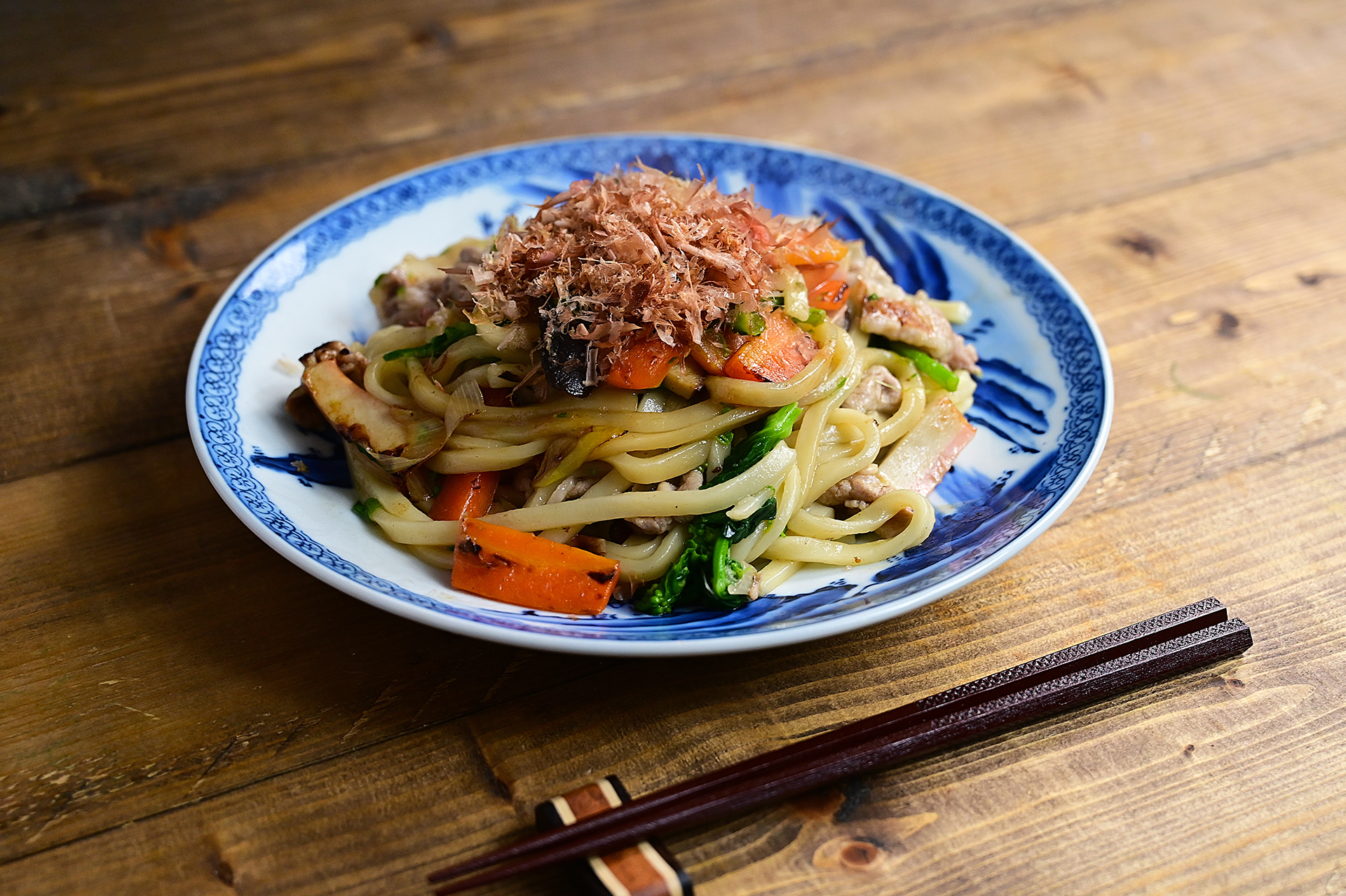
The secret to a truly unforgettable yaki udon lies in its flavoring. As I've grown more comfortable with Japanese cooking, I've realized how vital the right seasonings and sauces are to achieving that authentic taste. Here’s how I approach seasoning my yaki udon recipes to ensure each dish is as delicious as unique.
Traditional seasonings and sauces for authentic taste
A great sauce combines all ingredients and is the heart of the dish’s flavor. A classic yaki udon sauce combines salty, sweet, and savory flavors that perfectly complement the yaki udon noodles.
For added depth, you may also see recipes that add a touch of non-traditional seasonings, like oyster sauce (more commonly used in Chinese cuisine). I've discovered that a small amount of sesame oil can add delightful nuttiness or dashi powder to boost umami. Mixing these components in a small bowl before adding them to the stir-fried udon noodles ensures the flavors meld beautifully.
Experimenting with flavors for a personalized touch
Once comfortable with the traditional aspects of yaki udon noodles, experimenting with personal touches can transform a standard recipe into something uniquely yours. The beauty of yaki udon is that it's versatile. Don't be afraid to experiment with different flavors to create your personalized masterpiece! Here are a few ideas:
- Spicy Kick: Add a bit of red pepper flakes or a drizzle of sriracha to your sauce for a spicy kick.
- Citrus Twist: A squeeze of fresh lime juice or a splash of rice vinegar can add a refreshing, citrusy note.
- Sweet and Savory: Add a little honey or brown sugar for a sweeter sauce.
- Kimchi Twist: Though not traditional for udon, I add some chopped kimchi when I feel more adventurous for a burst of Korean flavor.
The possibilities are endless! You can find the best flavor combination to suit your taste buds.
Troubleshooting Common Cooking Mistakes
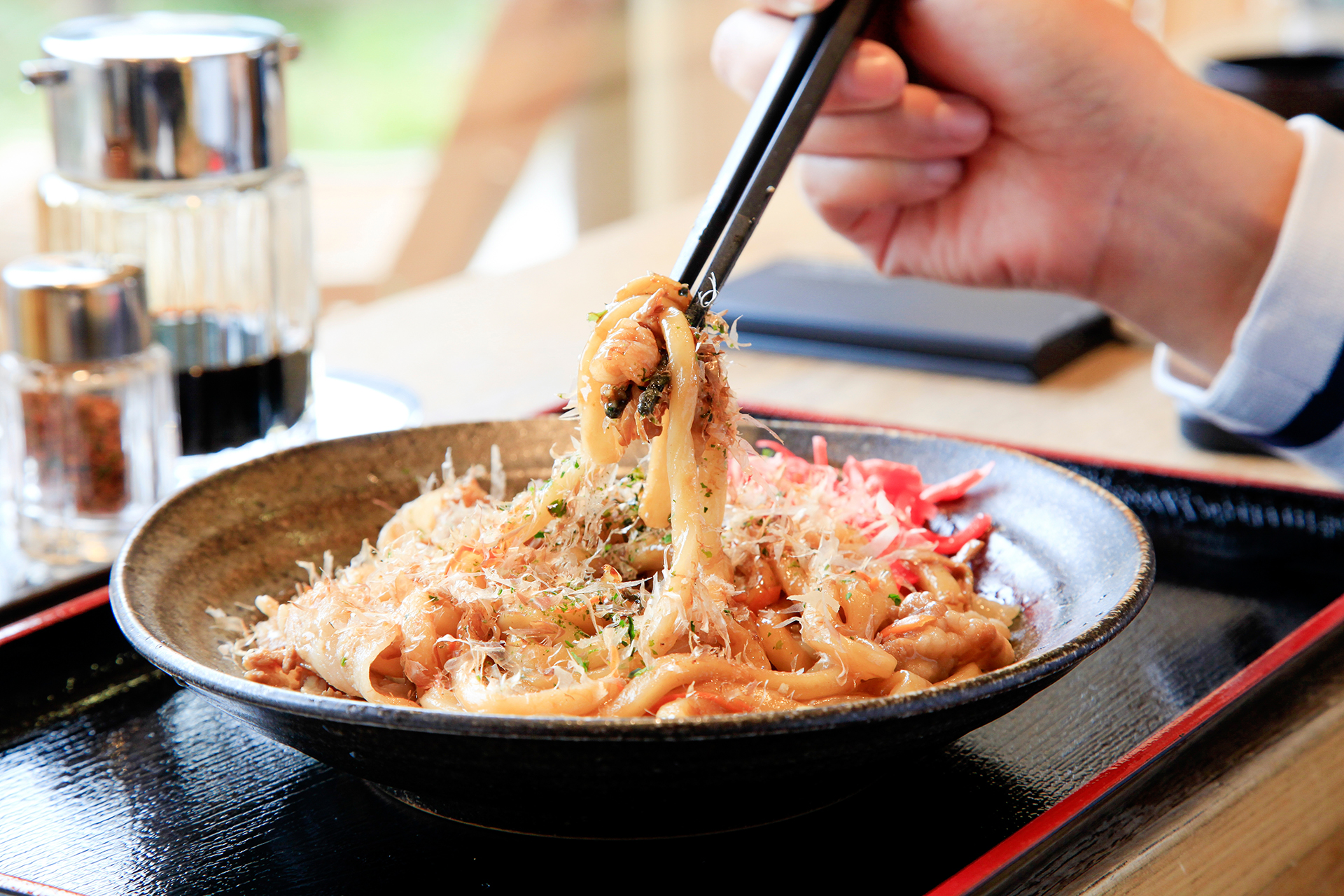
Common pitfalls when making Yaki Udon and how to avoid them
Even the most skilled cooks can make errors from time to time. Here are a couple of common pitfalls to avoid when making yaki udon noodles and how to fix them:
- Soggy Noodles: One of the most frequent issues I faced initially was the texture of the udon noodles. This is a common problem when you overcrowd the pan or don't cook the noodles al dente before adding them to the stir-fry. Solution: Use a large pan or wok to ensure everything has enough space to cook evenly. Ensure your udon noodles are cooked through but still have a slight bite.
- Too Much Sauce: Sauce management is another area where things can go wrong. Including too much sauce can make the dish soggy and overpower the delicate balance of flavors. Solution: I measure my sauce ingredients carefully, using enough to coat the stir-fried udon noodles and vegetables without drowning them. The key is to add the sauce towards the end of cooking so it can caramelize without making the noodles soggy.
Adjusting textures and flavors to suit your preference
Yaki udon's beauty lies in its customization. Cranking up the heat keeps my stir-fry crisp for a satisfying bite while letting the veggies soften creates a different textural experience. My go-to sauce is a simple blend of soy sauce, sesame oil, and sugar, but I love spicing things up with chili oil or adding a hint of sweetness and tanginess with tonkatsu sauce.
After cooking, I sometimes sprinkle dried bonito flakes or sesame seeds for an extra flavor bomb. These little tweaks let me personalize each yaki udon creation, making it a unique adventure every time. Through happy accidents and (admittedly) some initial flops, I've learned that mastering yaki udon is all about understanding how to adjust cook times, ingredients, and seasonings to create a yummy dish that sings to my taste buds.
Serving and Presentation
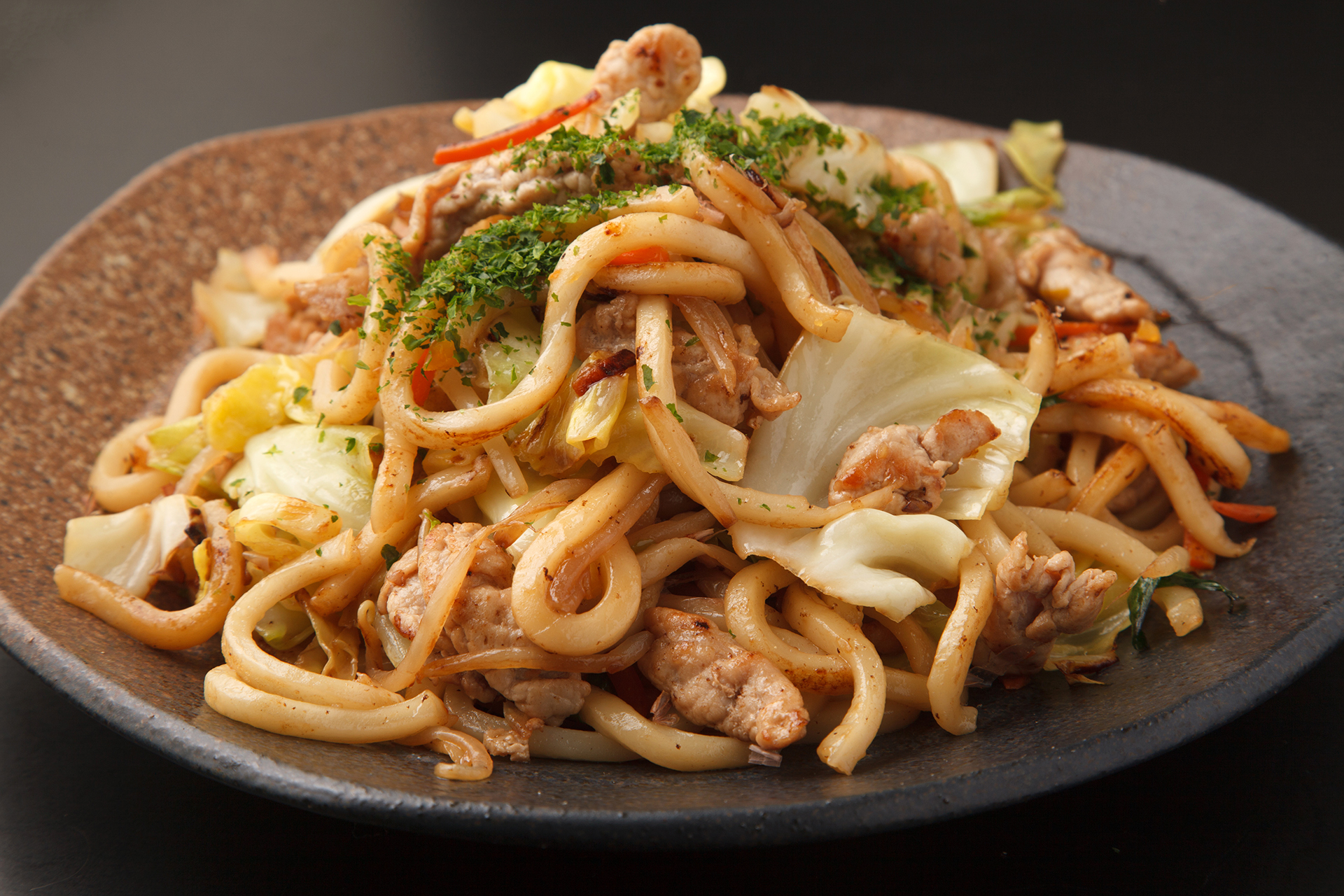
Ideas for plating Yaki Udon to impress your guests
Plating your yaki udon noodles doesn't have to be fancy, but creativity can go a long way. I start with a wide bowl or plate that gives the vibrant ingredients room to shine. I gently lay the stir-fried udon noodles at the base, ensuring they have a slight mound in the center for height. This makes the dish look fuller and showcases the glossy sheen of the noodles, which are coated in the savory sauce.
For visual contrast, I like to arrange the cooked vegetables and proteins around the noodles in a way that clearly displays all the components. If I use colorful vegetables like red bell peppers or green bok choy, I place them where they stand out against the darker noodles. This looks appealing and invites guests to dig into every dish element.
Optional garnishes and side dishes to complete the meal
Garnishing yaki udon noodles can dramatically enhance both its flavor and its appearance. I sometimes add a few edible flowers or a delicate cilantro sprig for a touch of elegance, which can make the plate pop.
When it comes to side dishes, I aim for balance and complementarity. A light, tangy cucumber salad dressed with rice vinegar can refresh the palate between bites of the rich noodles. Steamed edamame with sea salt is a great starter, adding a playful, interactive element to the meal.
Recap and Final Thoughts
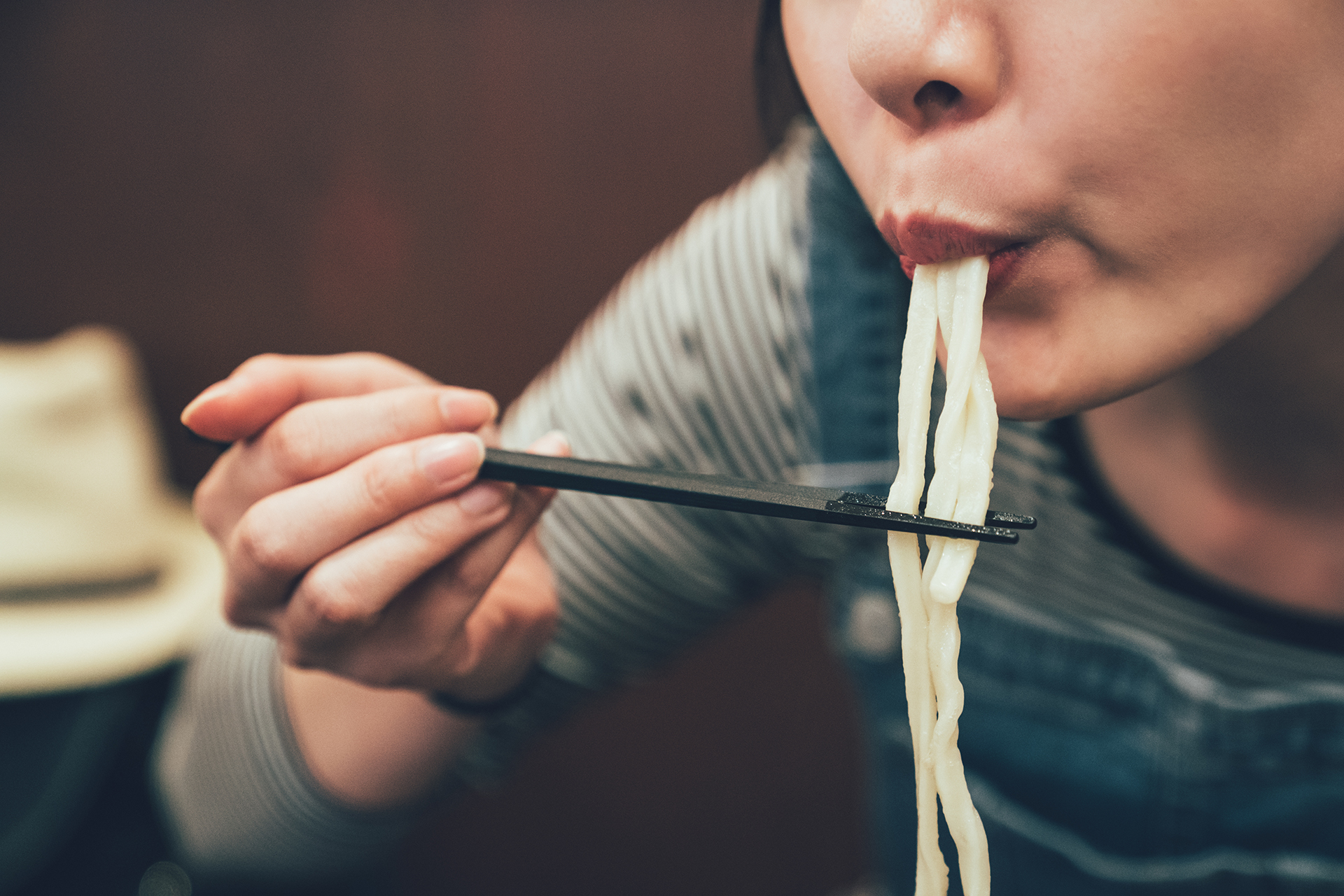
Conquering yaki udon noodles was a fun and flavorful journey. I learned that the key to success is having all your ingredients prepped and ready to go before firing up the heat. High heat and quick stir-frying techniques ensure everything stays crisp and flavorful. Feel free to experiment with different proteins and vegetables to personalize your yaki udon creation. The same goes for the sauce - a simple base of soy sauce, mirin, and sake is a great starting point, but feel free to add a touch of sweetness, heat, or umami to suit your taste.
Remember, there's no "correct" way to make yaki udon noodles. Embrace the opportunity to customize this dish and have fun in the kitchen! With some practice, you'll be whipping up impressive and delicious yaki udon noodles in no time!
Frequently Asked Questions
You'll typically find two types of udon noodles at the grocery store: fresh and dried. Fresh udon noodles cook much faster than dried ones. Simply blanch them in boiling water for 2-3 minutes until they float to the surface. Then, rinse them under cold water to stop the cooking process. But really, it's as simple as following the directions on the package!
Dried udon noodles require a bit more time and attention. Follow the package instructions, which typically involve boiling them in water for 8-10 minutes. Like fresh udon, rinse the cooked noodles under cold water to prevent sticking. Here are a couple of extra tips for perfect dried udon noodles: ● Add a little bit of salt to the boiling water to increase the flavor of the noodles. ● After rinsing the noodles, you can use a "hot water shocking" technique. This involves submerging the noodles in a large pot of boiled water for 30 seconds to a minute. This step helps to remove the extra starch and creates a springier texture.
Ready-to-eat udon noodles are the quickest to prepare, which makes them perfect for a fast-paced weeknight dinner. Since they're already cooked, I loosen them with a quick dunk in boiling water for about 1 minute to heat them through and remove preservatives. After draining, they're ready to be tossed into the stir fry with other ingredients, absorbing flavors without further cooking.
Udon noodles are traditionally boiled, not fried. Boiling them creates a chewy and slightly springy texture, perfect for stir-fries and noodle soups. However, add your udon noodles to a hot pan with a trickle of oil after cooking them. Then, give them a quick stir-fry to achieve a slightly crispy exterior.



















